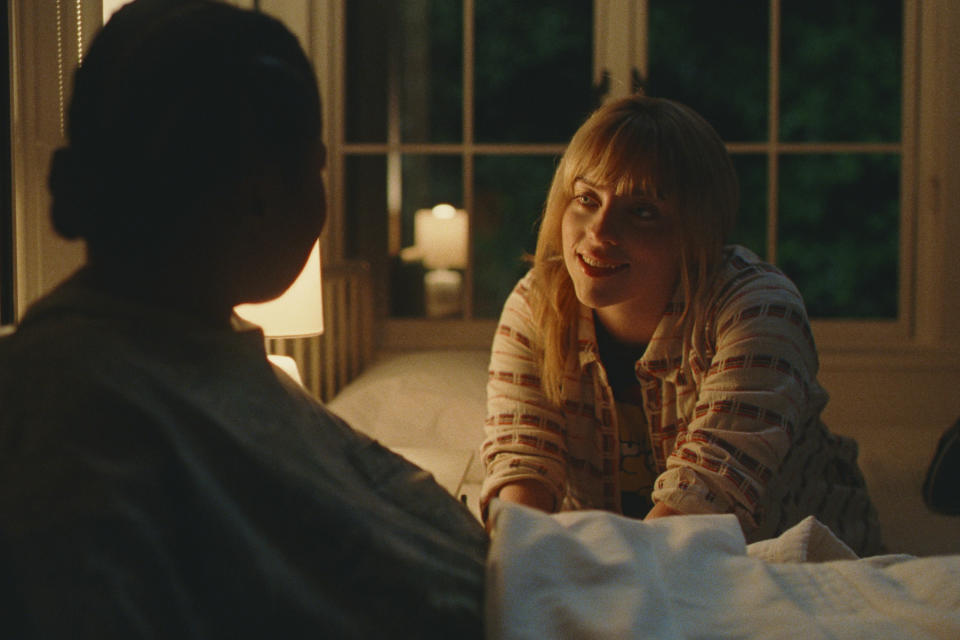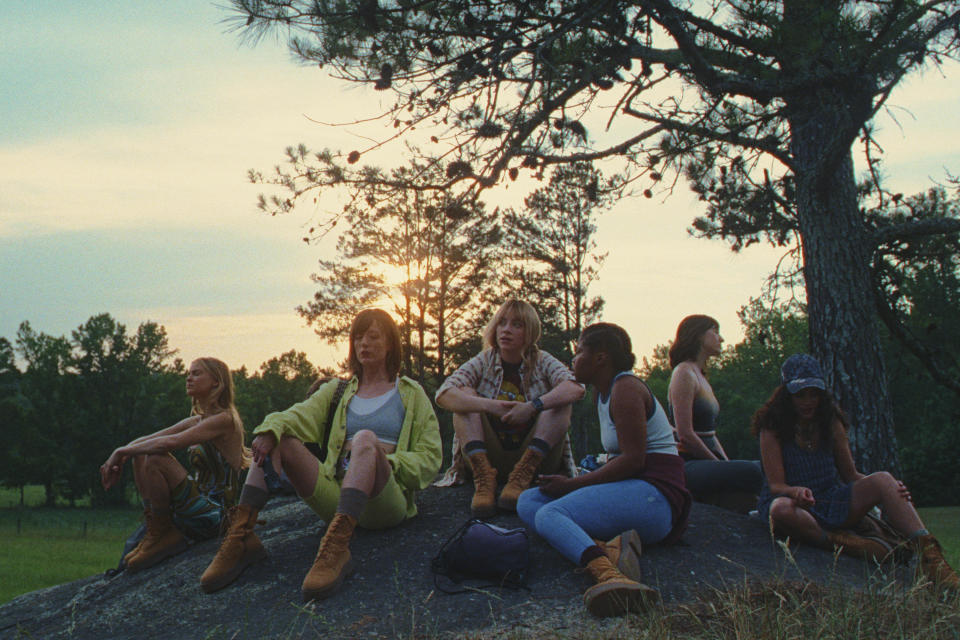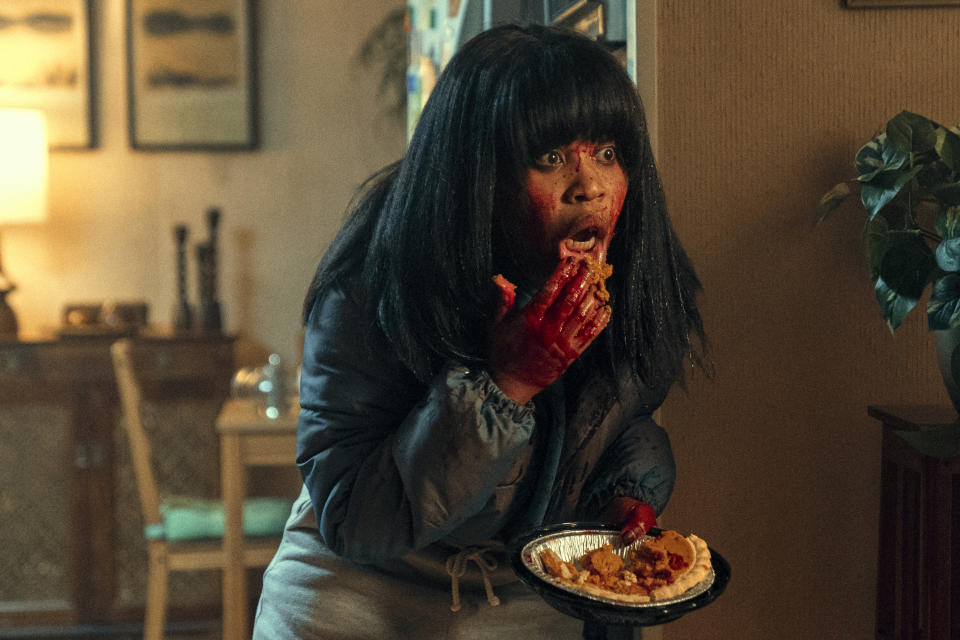Why the Look of ‘Swarm’ Is as Unsettling as Its Superfan Serial Killer

Murder, like everything else, just hits different on film. Prime Video series “Swarm” — co-created by Janine Nabors and Donald Glover — creates rich visual contrasts that amp up the awkwardness and obsessiveness of Dre (Dominique Fishback), a superfan of a Beyoncé-esque pop singer who is more than willing to kill in the name of her idol. Fishback’s performance allows us to glimpse how Dre’s innate strangeness and years of trauma inform what she does, but there’s always an essential wrongness to her and a brutal, unglamorous messiness to her kills. That wrongness comes from the image itself, and cinematographer Drew Daniels knew he could only convey that by shooting on film.
Daniels, who shot six of the show’s seven episodes (Gabriel Patay shot Episode 6’s mockumentary tangent), had strong initial instincts for how the story should look and feel. He wanted to avoid the easy excitement or overripe emotion of true crime stories and deny viewers easy identification with the “accomplishments” of the killer we’re following. That meant restraining the camera’s movements — with the exception of the final episode, the camera is very still — to better observe how Dre doesn’t quite fit into her environments.
More from IndieWire
The Swag of 'Swarm': How the Series Created Fan Memorabilia Worthy of the Beyhive
Donald Glover's Awkward Hook-Up Inspired Cringe 'Swarm' NSFW Scene
Read More: How “Swarm” Created Fan Memorabilia Worthy of the Beyhive
But Daniels also wanted the look of “Swarm” to have a graininess that could convey both the glamour of singer Ni’Jah (Nirine S. Brown) and the darkness and desperation of Dre’s world without her. “We’re going for the most European, almost, observational kind of cinema. Like a Michael Haneke kind of thing,” Daniels told IndieWire. “It just felt appropriate [to shoot on film]. Also, with all of the phones and all the mixed media involved in the show, I wanted to do the opposite of leaning into the digital and lean the other way. We really pushed it and leaned into the grain and the contrast.”

Courtesy of Prime Video
Most television shows don’t shoot on film for reasons ranging from cost to logistical limitations, and “Swarm” planned to shoot digital until the very last minute. “Donald put his foot down and was like, ‘I’m not gonna do this show unless it’s shot on film.’ And, you know, to his credit, he put a lot on the line, and I think it was a good choice,” Daniels said. “[Film] makes it feel like an event, bigger and larger than life, and makes it feel more important and adds some weight to it.”
With the freedom to give Dre’s story the texture, weight, and graininess it needed, Daniels also played with the series’ aspect ratio. There’s a beauty but also a slightly surprising quality to the show’s 3:2 frame, most commonly employed in still photography but which Jerzy Skolimowski’s “Eo” also used recently to create images that feel closer to visual art.
“[That aspect ratio] not too boxy. It’s not too wide. And I wanted to frame Dre with lots of headroom and with these static shots, it just felt right. Especially when you go in close, it’s like the perfect portrait aspect ratio and lent itself really well to the awkward nature of it, too. We could frame her in wides and frame the rooms and the ceilings and [make] her an alien. It just worked,” said Daniels.

Courtesy of Prime Video
Also a last-minute decision? The unflinching, one-shot murder sequences. “We decided on the day, really, to do the kills in these one-shots and just make them as simple as possible. Donald really led the charge on that one,” Daniels said.
“He was like, ‘When she hits him, he can go down and hide behind the counter and we could just kind fake it and do it old school and her performance will sell it,'” Field recalled of shooting the first episode’s climactic murder. “We only really had one shot at it, too, because it was going to take a long, long time to do a reset for her. In the same shot, she does the pie, she does everything, she’s covered in blood. It was like, ‘All right, we better nail this.’ So we only did one take. And that set the groundwork for the other [murders].”
Figuring out how to shoot the murder sequence was also a collaborative process. “That was my idea with the rock salt lamp [Dre uses to murder Khalid (Damson Idris)] because I was like, ‘OK, what if this thing was in the scene and you saw it in every shot. And then in the background when you could see her, you see the light pop. And then people are never going to think about those rock salt lamps ever the same again,'” Daniels said. “And, you know, the gag with the light bulb popping — we didn’t know it was gonna pop the way it did. It draws your attention and you’re just in that little pop of light. It just made it a little more dramatic.”

Warrick Page/Prime Video
“Swarm” doesn’t invite the viewer to understand Dre, even as part of its macabre satire. But Daniels also found that within the restrained, observational camera language there were still ways to make Dre’s interactions with people more dramatic. “Probably my favorite shot in the show [is] when she’s telling the story to Marissa’s friend [Karen Rodriguez] in the food court, and the camera’s just holding and it starts zooming in and then it zooms all the way into her mouth as she’s telling this really intricate lie,” Daniels said. “You realize she’s lying and you go closer and closer and closer and it’s just wrong. It almost feels grotesque to be that close to someone when they’re just lying as much as possible.”
The distancing cinematic language intentionally clashes with the beauty of Daniels’ images, holding Dre at arm’s length while visually expressing the violence of her passions. Whenever Daniels includes a rich, grainy splash of red, it’s as much a sign of impending danger as someone tweeting Ni’Jah slander.
Best of IndieWire
Sign up for Indiewire's Newsletter. For the latest news, follow us on Facebook, Twitter, and Instagram.


